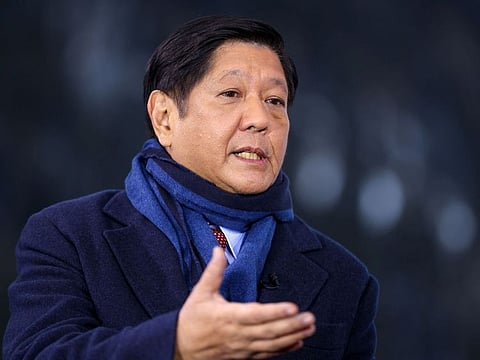Philippines likely to choose economic support over security cover
Marcos Jr. banks on funding from China to help revive the Philippines economy

Philippines President Ferdinand Marcos Jr. returned home from a three-day visit to China in early January with $22.8 billion in trade and investment deals. It was in keeping with his pledge before leaving for Beijing to return “with a harvest of agreements and investments” to strengthen the foundations of the Philippines economy.
Marcos draws his legacy of strong relations with China when in 1976, his late father, President Ferdinand Marcos Sr., became one of the first US allies to jettison Taipei for Beijing. The junior had accompanied his father on a visit to China and had met Chairman Mao Zedong. Recalling the trip, Marcos Jr. said he had “watched the development of our bilateral ties with great interest and attention.” For him, the current visit was meant to “continue that legacy of strengthening the bonds of friendship established between the Filipino and Chinese peoples.”
During the presidential campaign, Marcos openly backed the continuation of President Rodrigo Duterte’s foreign policy, branding China as the Philippines’ “strongest partner” and “emphasising the futility of confrontation and the value of robust economic cooperation with the Asian powerhouse.” Like Duterte, Marcos chose to visit China for his first major trip overseas. Their predecessors had first visited either Washington or Tokyo.
How China became Philippines’ largest trading partner
China and the Philippines signed 14 bilateral agreements in the industry, agriculture and tourism sectors. Other agreements include investment and funding arrangements for projects undertaken with Chinese assistance.
Trade between the two countries has continued to thrive in recent years. China’s exports to the Philippines have grown at an average annual rate of 20 per cent from 2010 to 2017, enabling China to overtake Japan as the largest trading partner in 2016. In 2021, China became the Philippines’ second biggest export market. China is also understood to have committed to addressing the trade deficit — currently in China’s favour, through increased imports from the Philippines.
Duterte’s election in 2016 boosted relations with China and his visit to Beijing the same year garnered investment and credit line pledges of $24 billion. President Marcos undertook the China trip early in his term to “shift relations into a higher gear”. The Philippines hopes that Chinese investments would lend support to its “Build Build Build” programme to uplift its domestic infrastructure, which is essential for economic growth.
Though the Duterte tenure was described as the ‘golden era’ in the Philippines, strains in the relations with China appeared near the end of his presidency as Beijing prevented resupply missions to the Philippines-owned islands in the South China Sea. Such encounters put his successor Ferdinand Marcos Jr. under pressure from the military and the public to adopt a more robust position over the territorial claims in the South China Sea.
Notwithstanding Marcos’s promising start, the Philippines’ relations with China could be tested over a number of issues like insufficient development of major infrastructure projects, contested claims over the South China Sea and the nature and extent of Manila’s defence ties with Washington. China is justifiably very sensitive to America’s military presence on its front yard.
The Philippines faces the dilemma of having the largest area of contested claims in the South China Sea with China. The Hague arbitration tribunal recognised the Philippines’ claims to the detriment of China. Duterte put the ruling on the back burner and chose to benefit from the economic relations with China.
The two sides have tried to resolve their disputes several times but without much luck. Though China favours individual negotiations with each contesting party, the ten-nation Association of Southeast Asian States (ASEAN), of which the Philippines is a member, has remained steadfast in negotiating these claims as a group.
Manila’s ties with Washington
In contrast to his predecessor, Marcos Jr. is also warming up towards the US. China is watching carefully. US Vice-President Kamala Harris and Secretary of State Antony Blinken were among the first visitors early in his tenure. The Philippines knows that a US military alliance can offer a sense of deterrence to China, but beyond that, the US has little gumption or capacity to provide economic support to raise the living standards of the people. Raising military stakes at the expense of economic development will damage the Philippines’ revival prospects as it has done with many countries. China will watch the proposed defence ties carefully and will pull back investments if Marcos Jr. is seen to impact Chinese interests beyond acceptable levels.
Marcos knows well that the US has fallen short of expectations on important economic needs of the developing countries and much of its engagement is only in the realm of military security. Under the pretence of ‘freedom of navigation,’ the US has significantly increased its military presence in the region.
As the current trends indicate, the Philippines with continue to opt for a robust economic partnership with China to lift people out of poverty.
— Sajjad Ashraf served as an adjunct professor at the Lee Kuan Yew School of Public Policy, National University of Singapore from 2008 to 2017. He was a member of the Pakistan Foreign Service from 1973 to 2008 and served as an ambassador to several countries
Sign up for the Daily Briefing
Get the latest news and updates straight to your inbox



